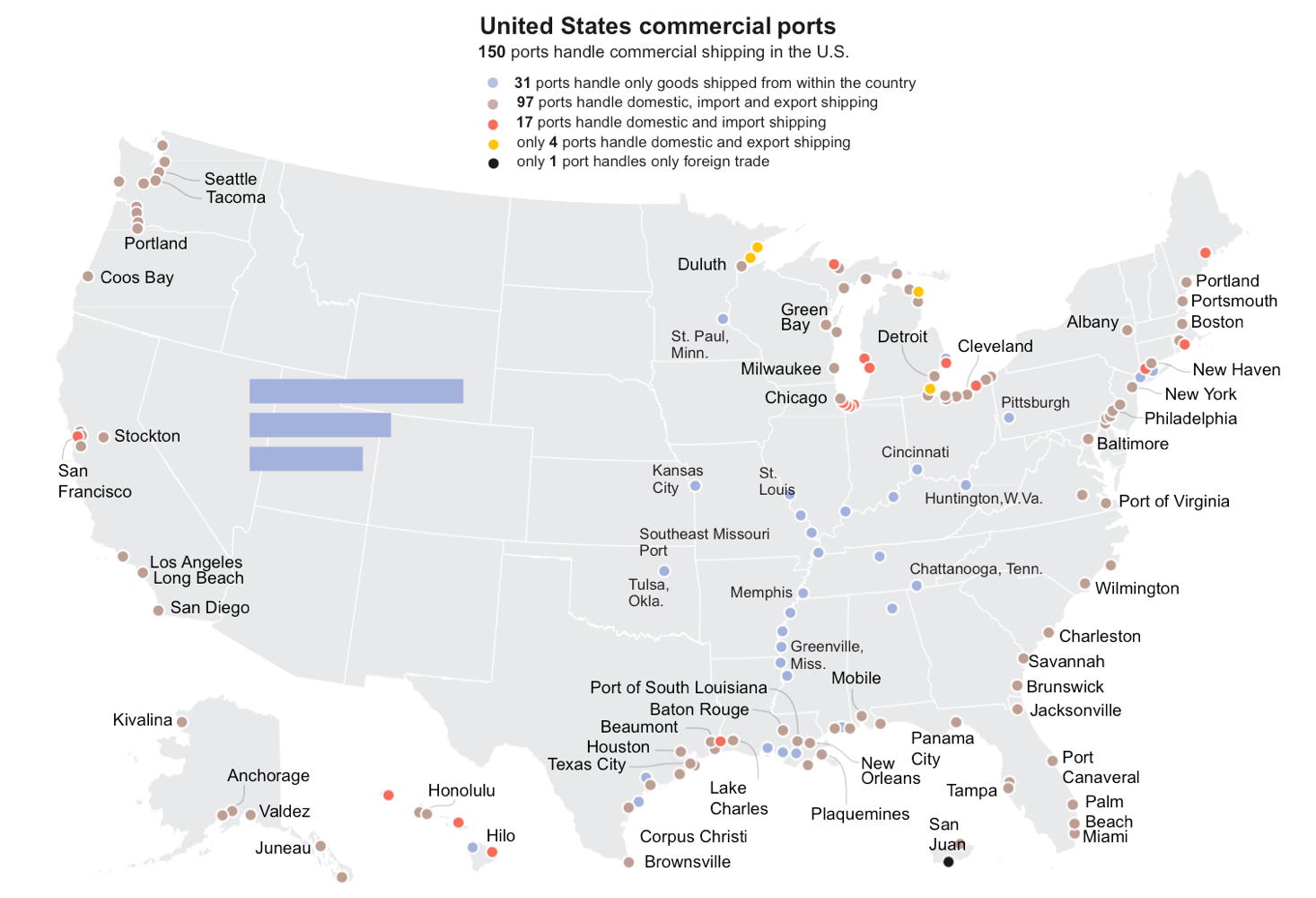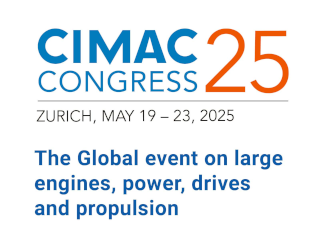Trade war, societal perception, federal support for infrastructure investments: US ports currently have several major issues on their agenda. A new five-year plan is imminent
In terms of transhipment volumes, US ports have certainly benefited in recent years from the opening of the expanded Panama[ds_preview] Canal – although the trade war between the US and China caused a decline in transpacific volumes in 2018 (see info box). Container shipping companies in particular are sending ever larger ships to the quaysides. This development has created a significant need for infrastructure expansion. Many ports have since modernised their facilities. But there is still a need for public and private financing.
In a market report, investment and consulting company Jones Lang LaSalle (JLL) said, while larger ships are reducing the per container cost to ocean carriers, these larger ships are also contributing to congestion around ports.
Therefore, ports are investing in rail capacity which would relieve some of the congestion. They are also trying to push all non-container operations such as transloading off terminals in order to have more space to handle and store containers.
However, the US trucking industry is struggling to find enough long-haul drivers, the report states, adding that »in order for ports to continue providing reliable service to inland locations, they have taken to developing rail-served inland ports. Rail service to these locations is generally cheaper and more reliable than truck service. Inland Ports can potentially help alleviate this issue of long-haul driver shortage.« As larger vessels create operational issues at large ports, there is an increased need for alternative transportation solutions from ports like trains and trucks. Another solution gaining traction is Short-Sea shipping, specifically containers hauled on barges or smaller vessels.
Containers volumes shipped on the eastbound transpacific route shrank by -2.5% in 2019, following a sharp drop in imports into the US in the fourth quarter, maritime analysts of Alphaliner say. Although volume growth was still positive in the first three quarters, recording a marginal growth rate of 0.5%, they shrank by 10.4% in the fourth quarter as there was no repeat of the cargo front-loading that took place in the last quarter of 2018 to avoid the punitive import tariffs that were to be imposed on Chinese imports to the US. According to the market report, this decline is the first that was recorded on these routes since 2009. While the trade war led to a decline in volumes from China and Hong Kong of 10.5% to 10.2mill. TEU, other Far East export origins recorded a combined growth of 17.1%.
The biggest challenges for US ports are being recognized and appreciated »for all the good they do«. Their societal contributions are oftentimes misunderstood or under-appreciated
However, even the signing of »Phase One« by the US and China in January is not enough for explicit optimism. The agreement that aims to ease some of the on-going trade tensions, »is not expected to reverse the decline of Chinese exports to the US in the near term,« Alphaliner says. Tariffs of 25% remain in place on 250 bn. $ worth of US imports from China.
Funding and investments in ports and infrastructure is as well a major topic on the agenda of Chris Connor, the new CEO of American Association of Port Authorities (AAPA). He says: »As key drivers of international trade, job creation, economic development and coastal environmental stewardship, seaports play a central role in lives of most people, although it isn’t always directly apparent, particularly to those who don’t live near a port.«
AAPA is currently in the process of surveying planned infrastructure investments for the period between 2021 and 2025. According to Connor, it is too early to predict the outcome of this survey. However, initial indications are that the cumulative total of planned investments will exceed the 155 bn. $ indicated from the 2016-2020 survey. The CEO emphasizes, a factor that heavily influences planned port infrastructure investment however is the degree to which the federal government invests in the connecting infrastructure with ports: »The infrastructure investments that ports and their private-sector partners are planning must have concomitant government investments.«
The biggest challenges for US ports therefore are being recognized and appreciated »for all the good they do.« For Connor, their societal contributions are oftentimes misunderstood or under-appreciated. This may result in difficulties to obtain the necessary federal/state/municipal funding.
»There were, and continue to be, federal policy and funding challenges by America’s port authorities in infrastructure development, port and cyber security, and environmental enhancements/protections during 2019,« he adds. However, AAPA was pleased that many port-related programs were included in the two legislative appropriation packages released by Congress and signed by the President in late December 2019. The FY’20 spending bill makes significant funds available for port infrastructure development – waterside and landside – and ensures the timely inspection of goods moving through America’s ports. Ultimately, however, much more federal support is needed, but this package reflects AAPA’s ongoing priorities.
With an eye on the trade war between the US and China, AAPA sees itself as »a strong free trade advocate.« Connor cites a study of late December 2019 by the US Federal Reserve which found that the tariffs have hurt American manufacturing rather than helping it.
While President Donald Trump signed phase 1 of a vital new trade pact with China, »which is good news for the US and America’s seaports«, AAPA is also pleased to herald the House and Senate approved US-Mexico-Canada Agreement (USMCA). Once approved by Canada, the association hopes it will modernize and address tariff schedules, commodity regulation, goods standards, regional content requirements in manufacturing, digital trade and labor standards.
North American ports stand to benefit significantly in this agreement from the increase in trade and travel between the three nations, and the certainty that the movement of goods and people won’t be hampered by unanticipated trade restrictions or tariffs. »We do emphasize that seaports, which are domestic and international trading hubs, are vital economic engines that must be supported at the national level,« Connor says, adding that seaport cargo activity accounts for over a quarter of the US economy, generating nearly 5.4 tr $ in total economic activity a year and more than 378 bn $ in federal, state and local tax revenues. Therefore, »it’s important for federal policymakers to recognize that international trade, both exports and imports, is good for American workers and the national economy, and actions that would inhibit trade have sizable negative repercussions to American jobs, and to American goods and services competitiveness overseas,« he says. Based on these assumptions, AAPA is urging the Administration and Congress to ensure U.S. seaport and other employment is not negatively impacted by trade actions, as business people, ports and their private sector partners are concerned about making significant investments in an unstable trade environment. »Eliminating that uncertainty is especially important as this Administration seeks to find partners to improve America’s infrastructure.«
Because trade »supports everyone«, AAPA is encouraging federal policymakers to work swiftly to restore market certainties and forge paths to expand exports, rather than create new import restrictions,« the CEO concludes.
In the meantime there is at least one piece of good news. The US Department of Transportation’s Maritime Administration (MARAD) announced that it has awarded more than 280mill. $ in discretionary grant funding through the new Port Infrastructure Development Program.





















